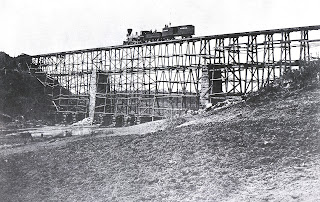Woo-woo
The stories in this blog are for those who like to peer into the natural and metaphysical architecture of places.
I came to this approach by reflecting on the work of land conservation. For most conservationists, perpetuity of place is the coin of the realm. As my curiosity encompassed Potomac Creek’s peoples, ecology,
and more, the hardest lesson I learned is that the way "perpetuity" is applied
today will not work for actual conservation. We are too focused on acreage -- on the spaces that we as a species see, measure, and can most easily relate to. That is how we understand place.
Yet, you pick
up a stone in the path, find it smooth, and toss it back. You pick up another
and see moss or lichens growing on it, and that is something entirely
different. What makes a “place” is not the human connection to it, but life. The only workable meaning of
perpetuity is one that apprehends the collective, jumbled consciousness of homo sapiens and all other species. Otherwise, Potomac Creek is just a wet rock.
Anything that de-centers the way we see Potomac Creek is good, for a living world has no center. That is the thesis of this blog.
Without this expanded idea of perpetuity, the Potomac Creek we see and know – in all its parts and meanings – will continue to diminish, as life here becomes thinner and thinner.
 |
| Hand and paw (photo by L. Singh) |



.jpg)

Comments
Post a Comment